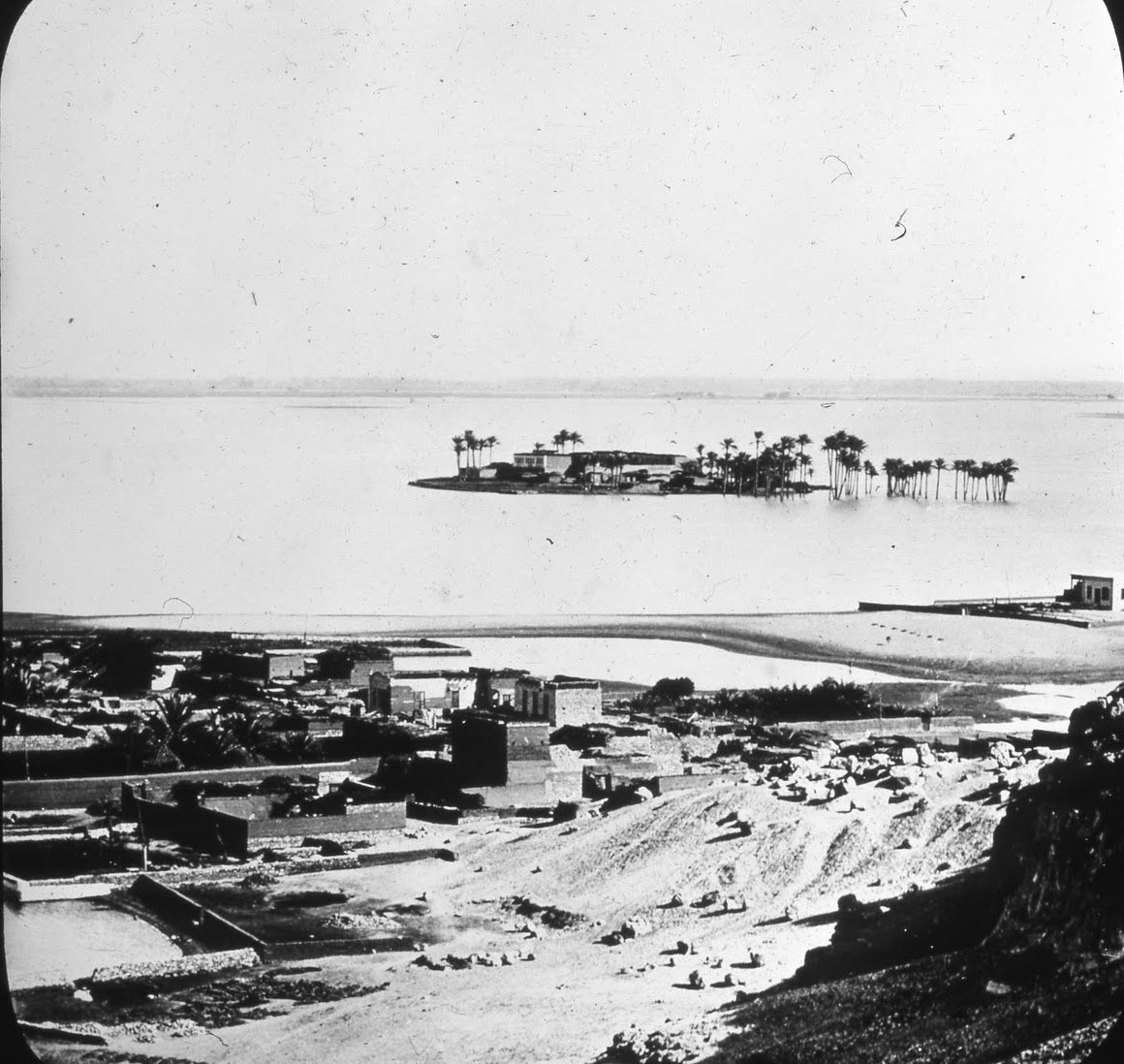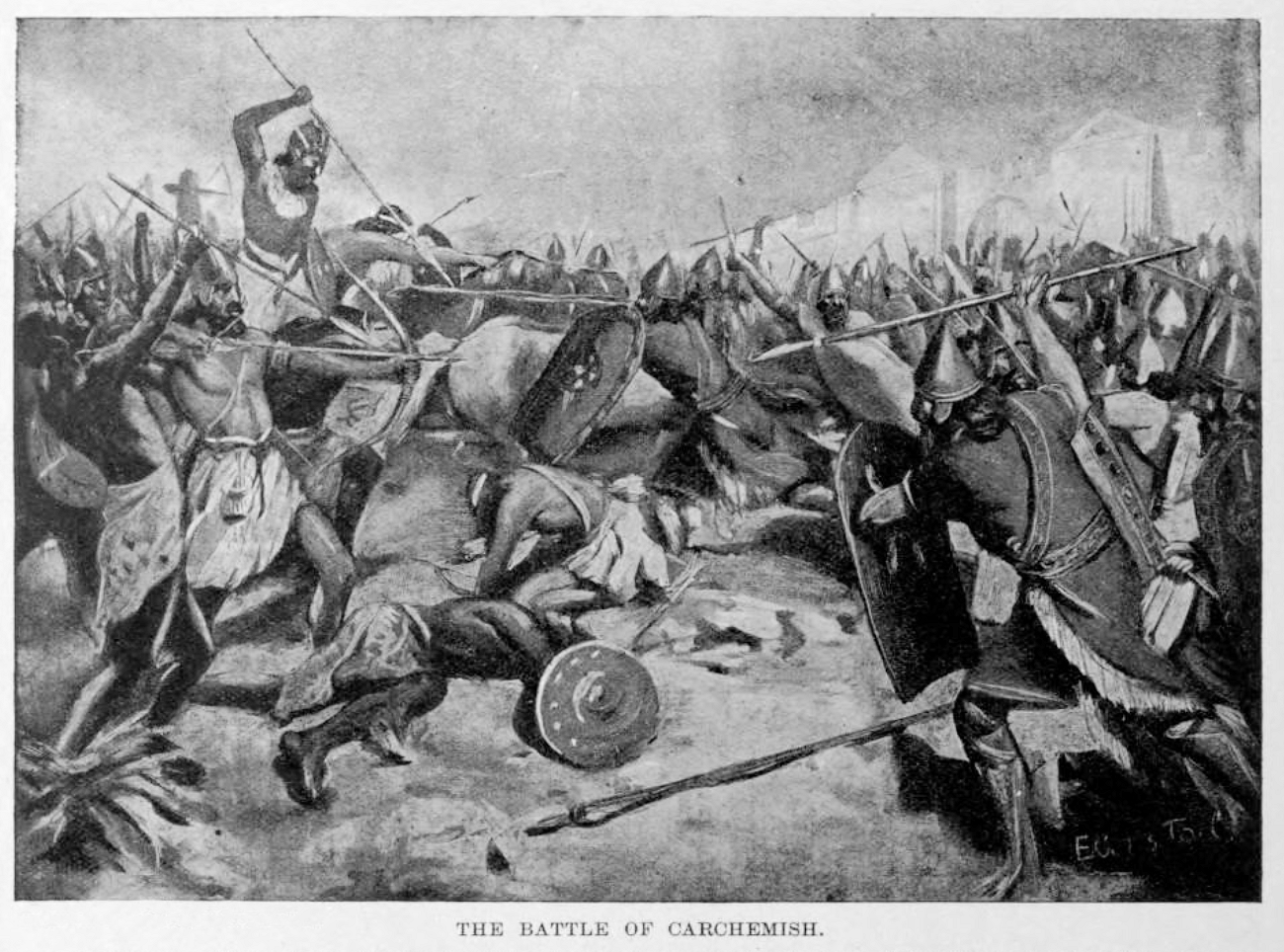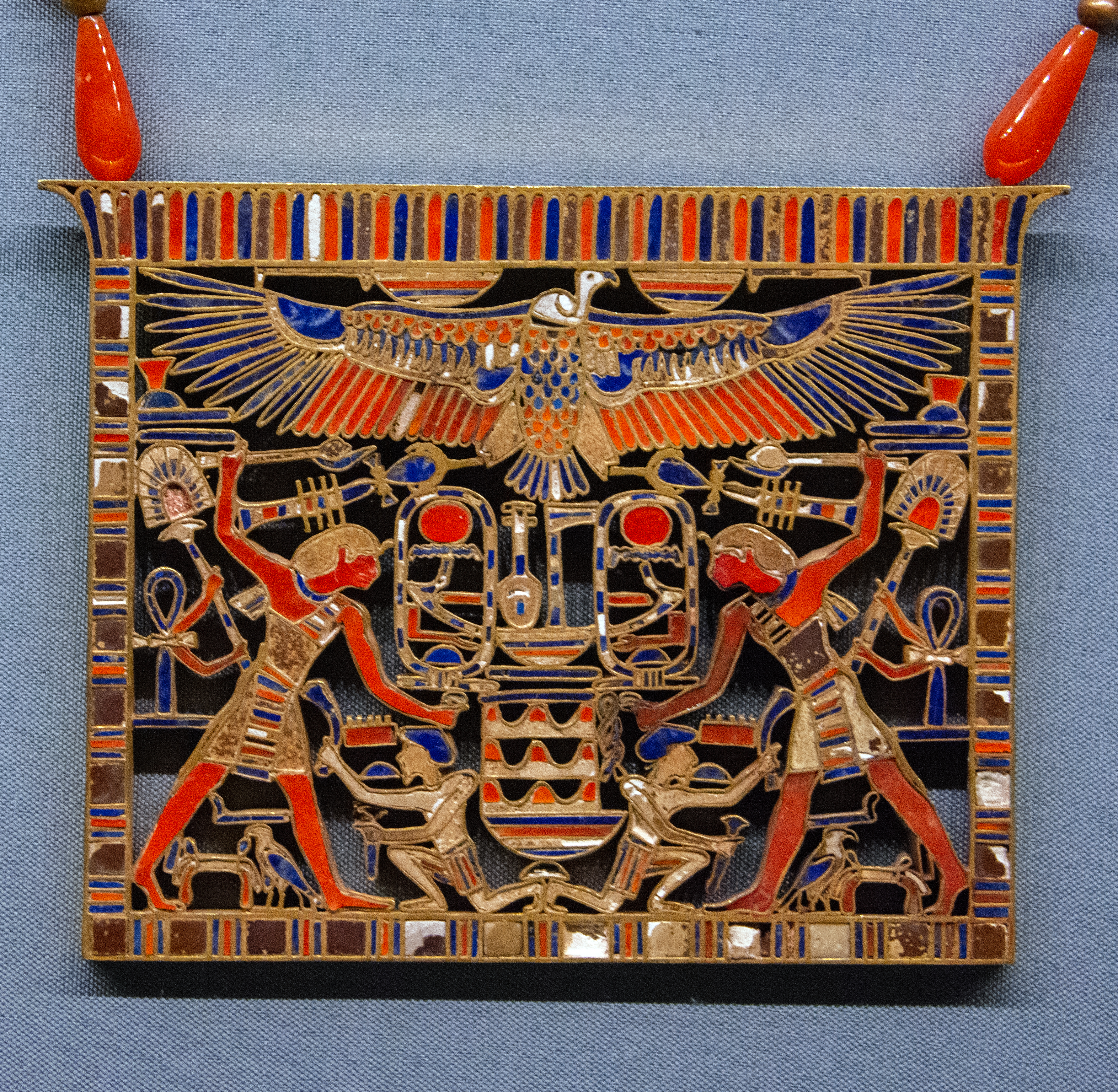|
Tell Nebesha
Tell Nebesha or Nebesheh (also known as 'Faraon' or 'Farun') is an archaeological site in Egypt, and the location of the ancient city of Imet. It is found around 10km south of Tanis in the Eastern Nile Delta. This was the ancient capital of the 19th Nome of Lower Egypt. By the Assyrian period, it was succeeded by Tanis. Archaeology The site consists of three areas: the temple site, the town, and the cemetery. A temple at the site, dedicated to the goddess Wadjet, the cobra goddess of Lower Egypt, may have been constructed during the Ramesside Period. Yet the evidence of inscriptions discovered at the site "clearly indicates that occupation begun in the 18th Dynasty".Vincent RazanajaoD'Imet à Tell Farâoun : recherches sur la géographie, les cultes et l'histoire d'une localité de Basse-Égypte orientale.(English synopsis) Wadjet was worshipped in the area as the 'Lady of Imet'. Later she was joined by Min and Horus to form a triad of deities. This was based on an Osiriac ... [...More Info...] [...Related Items...] OR: [Wikipedia] [Google] [Baidu] |
Sphinx From Nebesheh 3
A sphinx ( ; , ; or sphinges ) is a mythical creature with the head of a human, the body of a lion, and the wings of an eagle. In Greek tradition, the sphinx is a treacherous and merciless being with the head of a woman, the haunches of a lion, and the wings of a bird. According to Greek myth, she challenges those who encounter her to answer a riddle, and kills and eats them when they fail to solve the riddle. This deadly version of a sphinx appears in the myth and drama of Oedipus. In Egyptian mythology, in contrast, the sphinx is typically depicted as a man (an androsphinx ()), and is seen as a benevolent representation of strength and ferocity, usually of a pharaoh. Unlike Greek or Levantine/Mesopotamian ones, Egyptian sphinxes were not winged. Both the Greek and Egyptian sphinxes were thought of as guardians, and statues of them often flank the entrances to temples. During the Renaissance, the sphinx enjoyed a major revival in European decorative art. During this perio ... [...More Info...] [...Related Items...] OR: [Wikipedia] [Google] [Baidu] |
Flinders Petrie
Sir William Matthew Flinders Petrie ( – ), commonly known as simply Sir Flinders Petrie, was an English people, English Egyptology, Egyptologist and a pioneer of systematic methodology in archaeology and the preservation of artefacts. He held the first chair of Egyptology in the United Kingdom, and excavated many of the most important archaeological sites in Egypt in conjunction with his Irish-born wife, Hilda Petrie, Hilda Urlin. Some consider his most famous discovery to be that of the Merneptah Stele, an opinion with which Petrie himself concurred. Undoubtedly at least as important is his 1905 discovery and correct identification of the character of the Proto-Sinaitic script, the ancestor of almost all alphabetic scripts. Petrie developed the system of dating layers based on pottery and Ceramic engineering, ceramic findings. Petrie has been denounced for his pro-eugenics views; he was a dedicated believer in the superiority of the Germanic-speaking world, Northern p ... [...More Info...] [...Related Items...] OR: [Wikipedia] [Google] [Baidu] |
Cities In Ancient Egypt
A city is a human settlement of a substantial size. The term "city" has different meanings around the world and in some places the settlement can be very small. Even where the term is limited to larger settlements, there is no universally agreed definition of the lower boundary for their size. In a narrower sense, a city can be defined as a permanent and Urban density, densely populated place with administratively defined boundaries whose members work primarily on non-agricultural tasks. Cities generally have extensive systems for housing, transportation, sanitation, Public utilities, utilities, land use, Manufacturing, production of goods, and communication. Their density facilitates interaction between people, government organisations, government organizations, and businesses, sometimes benefiting different parties in the process, such as improving the efficiency of goods and service distribution. Historically, city dwellers have been a small proportion of humanity overall, bu ... [...More Info...] [...Related Items...] OR: [Wikipedia] [Google] [Baidu] |
Tahpanhes
Tahpanhes or Tehaphnehes (; or ) known by the Ancient Greeks as the ( Pelusian) Daphnae () and Taphnas () in the Septuagint, now Tell Defenneh, was a city in ancient Egypt. It was located on Lake Manzala on the Tanitic branch of the Nile, about 26 km (16 miles) from Pelusium. The site is now situated on the Suez Canal. Name The meaning of the name remains uncertain although it appears to be of an Egyptian origin. Biblical scholar John L. McKenzie refers the name to ''T-h-p-nhsj'' meaning ''Fortress of the Nubian'', while William Albright adds it means ''Fortress of Pinehas''. Daressy and Spiegelberg connect the name with the hieroglyphic word ''Tephen''. History King Psammetichus (664–610 BC) established a garrison of foreign mercenaries at Daphnae, mostly Carians and Ionian Greeks (Herodotus ii. 154). According to the Hebrew Bible, the Jews from Jerusalem fled to this place after the death of Gedaliah and settled there for a time (Jeremiah 2:16; Jeremiah 4 ... [...More Info...] [...Related Items...] OR: [Wikipedia] [Google] [Baidu] |
List Of Ancient Egyptian Sites
This is a list of ancient Egyptian sites, throughout Egypt and Nubia. Sites are listed by their classical name whenever possible, if not by their modern name, and lastly with their ancient name if no other is available. Nomes A nome is a subnational administrative division of Ancient Egypt. Lower Egypt * Nome 1: White Walls *Nome 2: Cow's thigh *Nome 3: West *Nome 4: Southern Shield *Nome 5: Northern Shield * Nome 6: Mountain bull *Nome 7: West harpoon *Nome 8: East harpoon *Nome 9: Andjety *Nome 10: Black bull *Nome 11: Heseb bull *Nome 12: Calf and Cow * Nome 13: Prospering Scepter *Nome 14: Eastmost *Nome 15: Fish *Nome 16: Djehuti *Nome 17: The Throne *Nome 18: Prince of the South *Nome 19: Prince of the North *Nome 20: Plumed Falcon Upper Egypt * Nome 1: Land of the bow * Nome 2: Throne of Horus * Nome 3: The Shrine *Nome 4: The sceptre * Nome 5: The two falcons * Nome 6: The crocodile / Dendera *Nome 7: Sistrum * Nome 8: Great lands *Nome 9: Minu (Min) * Nome 10: ... [...More Info...] [...Related Items...] OR: [Wikipedia] [Google] [Baidu] |
Saite
The Twenty-sixth Dynasty of Egypt (notated Dynasty XXVI, alternatively 26th Dynasty or Dynasty 26) was the last native dynasty of ancient Egypt before the Persian conquest in 525 BC (although other brief periods of rule by Egyptians followed). The dynasty's reign (664–525 BC) is also called the Saite Period after the city of Sais, where its pharaohs had their capital, and marks the beginning of the Late Period of ancient Egypt.Aidan Dodson, Dyan Hilton. ''The Complete Royal Families of Ancient Egypt''. The American University in Cairo Press, London 2004 History This dynasty traced its origins to the Twenty-fourth Dynasty. Psamtik I was probably a descendant of Bakenranef. However, other sources describe him as of Libyan descent. Following the Neo-Assyrian conquest of Egypt during the reigns of Taharqa and Tantamani, and the subsequent collapse of the Napata-based Twenty-fifth Dynasty of Egypt, Psamtik I was recognized as sole king over all of Egypt. Psamtik formed alliances ... [...More Info...] [...Related Items...] OR: [Wikipedia] [Google] [Baidu] |
Supreme Council Of Antiquities
The Supreme Council of Antiquities (SCA; ) was established in 1994, responsible for the conservation, protection, and regulation of all antiquities and archaeological excavations in Egypt. From 1994 to 2011, the SCA was a department of the Egyptian Ministry of Culture. In 2011, the Supreme Council of Antiquities became part of the independent department of the Ministry of State for Antiquites (MSA). In 2022, the department was folded into the Ministry of Antiquities and Tourism. Although the name of the organization has changed over the years, the purpose and function of it has remained consistent. The first government body responsible for the preservation and protection of Egypt's rich historical landscape was the Department of Antiquities, established in 1858. This became the Egyptian Antiquities Organisation in 1971. Role As part of the Minister of Culture, The SCA is directed through the Administrative Council by the Secretary-General. The SCA was the only agent permitted ... [...More Info...] [...Related Items...] OR: [Wikipedia] [Google] [Baidu] |
Ramesses II
Ramesses II (sometimes written Ramses or Rameses) (; , , ; ), commonly known as Ramesses the Great, was an Pharaoh, Egyptian pharaoh. He was the third ruler of the Nineteenth Dynasty of Egypt, Nineteenth Dynasty. Along with Thutmose III of the Eighteenth Dynasty of Egypt, Eighteenth Dynasty, he is often regarded as the greatest, most celebrated, and most powerful pharaoh of the New Kingdom of Egypt, New Kingdom, which itself was the most powerful period of ancient Egypt. He is also widely considered one of ancient Egypt's most successful warrior pharaohs, conducting no fewer than 15 military campaigns, all resulting in victories, excluding the Battle of Kadesh, generally considered a stalemate. In Ancient Greek literature, ancient Greek sources, he is called Ozymandias, derived from the first part of his Egyptian-language regnal name: . Ramesses was also referred to as the "Great Ancestor" by successor pharaohs and the Egyptian people. For the early part of his reign, he focu ... [...More Info...] [...Related Items...] OR: [Wikipedia] [Google] [Baidu] |
19th Dynasty
The Nineteenth Dynasty of Egypt (notated Dynasty XIX), also known as the Ramessid dynasty, is classified as the second Dynasty of the Ancient Egyptian New Kingdom period, lasting from 1292 BC to 1189 BC. The 19th Dynasty and the 20th Dynasty furthermore together constitute an era known as the ''Ramesside period''. This Dynasty was founded by Vizier Ramesses I, whom Pharaoh Horemheb chose as his successor to the throne. History Background The warrior kings of the early 18th Dynasty had encountered only little resistance from neighbouring kingdoms, allowing them to expand their realm of influence easily, but the international situation had changed radically towards the end of the dynasty. The Hittites had gradually extended their influence into Syria and Canaan to become a major power in international politics, a power that both Seti I and his son Ramesses II would confront in the future. 19th Dynasty Seti I and Ramesses II The New Kingdom of Egypt reached the zenith ... [...More Info...] [...Related Items...] OR: [Wikipedia] [Google] [Baidu] |
12th Dynasty
The Twelfth Dynasty of ancient Egypt (Dynasty XII) is a series of rulers reigning from 1991–1802 BC (190 years), at what is often considered to be the apex of the Middle Kingdom (Dynasties XI–XIV). The dynasty periodically expanded its territory from the Nile delta and valley South beyond the second cataract and East into Canaan. The Twelfth Dynasty was marked by relative stability and development. It has a notably well recorded history for the period. Its first pharaoh was Amenemhat I and its final was Sobekneferu. History The chronology of the Twelfth Dynasty is the most stable of any period before the New Kingdom. The Turin Royal Canon gives 213 years (1991–1778 BC). Manetho stated that it was based in Thebes, but from contemporary records it is clear that the first king of this dynasty, Amenemhat I, moved its capital to a new city named "Amenemhat-itj-tawy" ("Amenemhat the Seizer of the Two Lands"), more simply called, Itjtawy. The location of Itjtawy has not bee ... [...More Info...] [...Related Items...] OR: [Wikipedia] [Google] [Baidu] |
Amenemhat III
:''See Amenemhat, for other individuals with this name.'' Amenemhat III (Ancient Egyptian: ''Ỉmn-m-hꜣt'' meaning 'Amun is at the forefront'), also known as Amenemhet III, was a pharaoh of ancient Egypt and the sixth king of the Twelfth Dynasty of the Middle Kingdom. He was elevated to throne as co-regent by his father Senusret III, with whom he shared the throne as the active king for twenty years. During his reign, Egypt attained its cultural and economic zenith of the Middle Kingdom. The aggressive military and domestic policies of Senusret III, which re-subjugated Nubia and wrested power from the nomarchs, allowed Amenemhat III to inherit a stable and peaceful Egypt. He directed his efforts towards an extensive building program with particular focus on Faiyum. Here he dedicated a temple to Sobek, a chapel to Renenutet, erected two colossal statues of himself in Biahmu, and contributed to excavation of Lake Moeris. He built for himself two pyramids at Dahshur and Ha ... [...More Info...] [...Related Items...] OR: [Wikipedia] [Google] [Baidu] |
Museum Of Fine Arts, Boston
The Museum of Fine Arts (often abbreviated as MFA Boston or MFA) is an art museum in Boston, Massachusetts. It is the list of largest art museums, 20th-largest art museum in the world, measured by public gallery area. It contains 8,161 paintings and more than 450,000 works of art, making it one of the most comprehensive collections in the Americas. With more than 1.2 million visitors a year, it is the List of most-visited art museums, 79th-most-visited art museum in the world . Founded in 1870 in Copley Square, the museum moved to its current Fenway–Kenmore, Fenway location in 1909. It is affiliated with the School of the Museum of Fine Arts at Tufts. History 1870–1907 The Museum of Fine Arts was founded in 1870 and was initially located on the top floor of the Boston Athenæum. Most of its initial collection came from the Athenæum's Art Gallery. In 1876, the museum moved to a highly ornamented brick Gothic Revival architecture, Gothic Revival building designed by John H ... [...More Info...] [...Related Items...] OR: [Wikipedia] [Google] [Baidu] |









